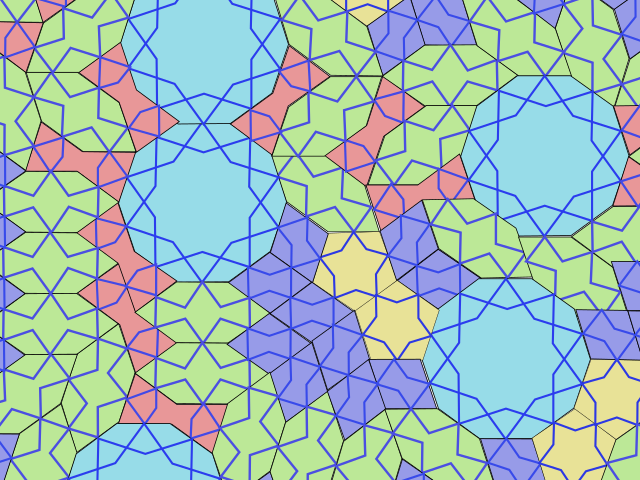Difference between revisions of "Language/Multiple-languages/Culture/Traditional-Symbols-and-Motifs:-Central-Asia"
< Language | Multiple-languages | Culture
Jump to navigation
Jump to search
(→Girih) |
|||
| Line 12: | Line 12: | ||
== Islamic Star == | == Islamic Star == | ||
https://upload.wikimedia.org/wikipedia/commons/thumb/a/ab/Rub_El_Hizb.svg/240px-Rub_El_Hizb.svg.png | https://upload.wikimedia.org/wikipedia/commons/thumb/a/ab/Rub_El_Hizb.svg/240px-Rub_El_Hizb.svg.png | ||
Revision as of 07:48, 20 June 2023

This page features translations of symbol and motif terms in different languages from Central Asia, accompanied by pictures.
Girih

Uzbek:

Islamic Star

Uzbek:

Tamga
| Old Turkic |
|---|
| 𐱃𐰢𐰍𐰀 |
Kazakh:
| division | symbol |
|---|---|
| Middle Zhuz | 
|
| Senior Zhuz | 
|
Other lessons
- Romanisations
- Text Processing Tools
- Internet Blogs
- Traditional Architectures: Southern Europe
- Traditional Symbols and Motifs
- Major Political Parties and Religions
- Traditional Symbols and Motifs: Western Europe
- Traditional Symbols and Motifs: Southern Europe
- Timelines by Country
- Traditional Architectures: Polynesia
- Ranking of countries by cost of living in the world
- Introduction to Common Han Characters
- Cities with the best quality of life
- Traditional Symbols and Motifs: Southern America
- Internet Courses